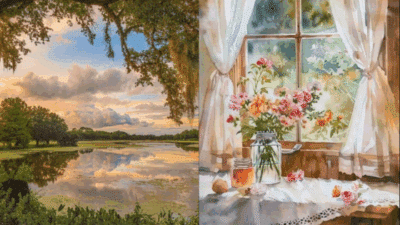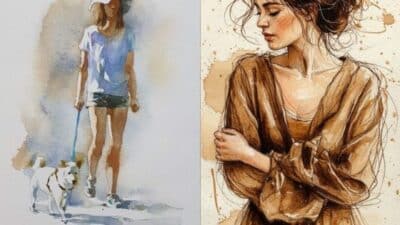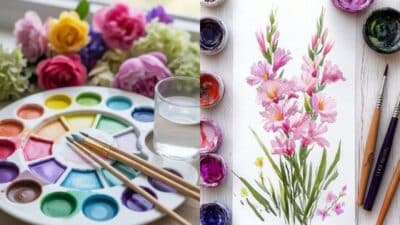Have you ever stared at a blank piece of paper, a palette of vibrant watercolors before you, and felt a surge of excitement mixed with a tiny flutter of uncertainty? Welcome to the wonderful world of watercolor painting! This luminous, expressive medium has captivated artists for centuries, renowned for its ability to capture light, convey emotion, and produce stunning, ethereal effects. From delicate washes to bold, dramatic strokes, watercolor offers a journey of discovery for every artist, regardless of their experience level. If you’re eager to dip your brush into a spectrum of possibilities, you’ve come to the right place. Get ready to unlock your creative potential with a treasure trove of exciting watercolor drawing ideas that are perfect for beginners, seasoned enthusiasts, and everyone in between!
Why Watercolor? The Enduring Allure
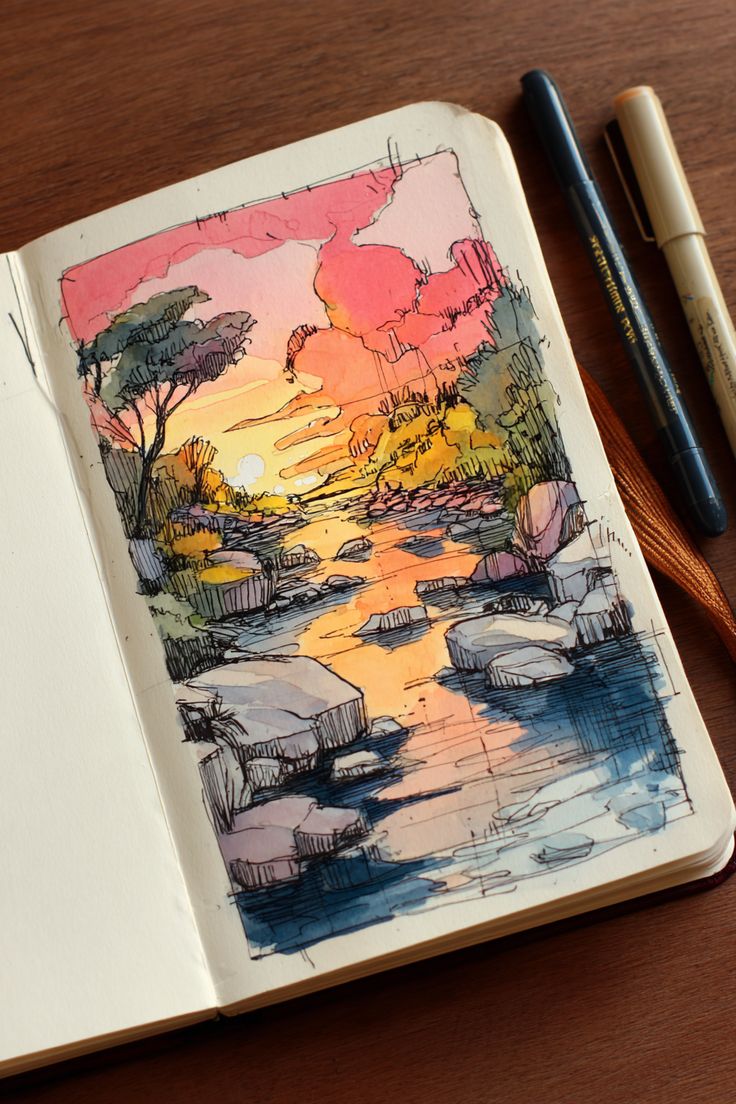
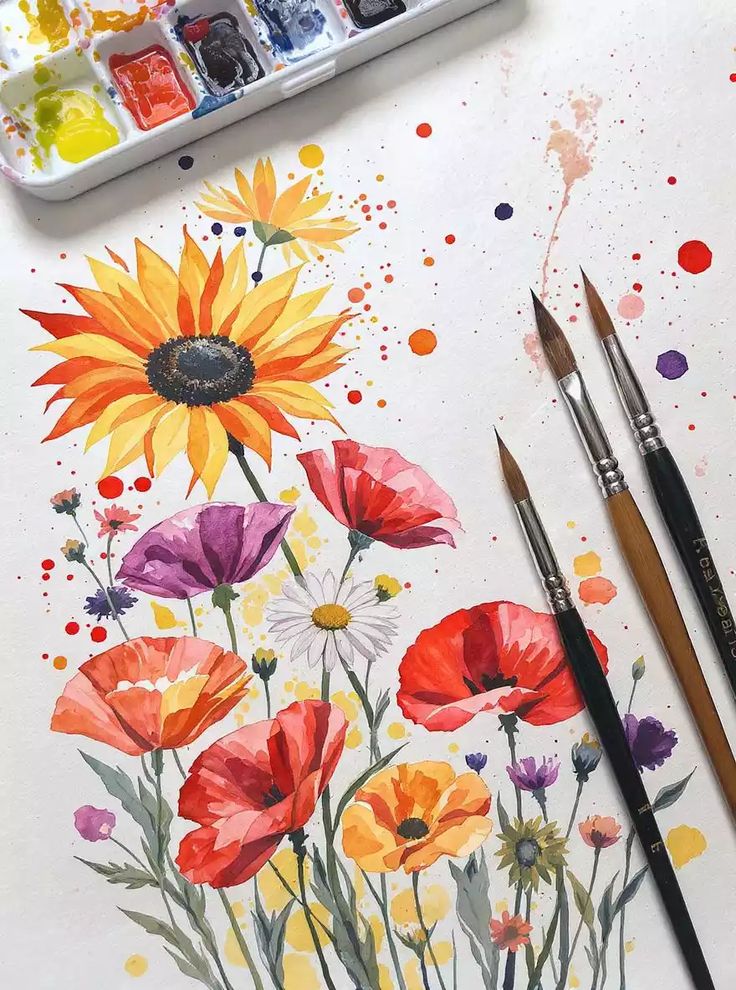
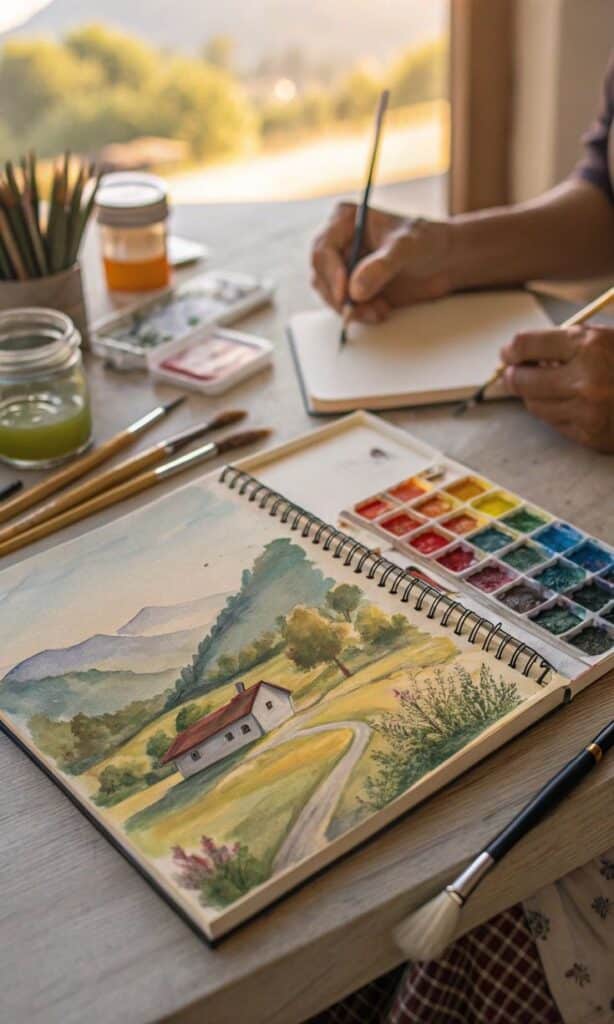
Watercolor isn’t just paint; it’s a dance between pigment and water, an art form where patience and spontaneity intertwine. Its unique characteristics make it incredibly appealing to a diverse range of artists.
Accessibility for Beginners
One of the greatest beauties of watercolor is its surprising accessibility. You don’t need a massive investment in expensive supplies to get started. A basic set of pan paints, a few brushes, and some watercolor paper are all you need to begin experimenting. The process itself is forgiving in its initial stages, allowing for playful exploration without the pressure of perfection. Simple techniques, like creating gradients or blending colors, yield satisfying results almost immediately, building confidence and encouraging further artistic adventures.
Versatility for Experts
For those with more experience, watercolor transforms into a sophisticated tool capable of incredible depth and detail. Mastering control over water flow, understanding pigment properties, and employing advanced layering techniques can lead to breathtakingly realistic landscapes, intricate portraits, and powerful abstract compositions. The ability to build layers of translucent color, creating luminosity and vibrancy unmatched by other mediums, is a constant source of fascination for expert watercolorists.
Therapeutic Benefits
Beyond its artistic merits, watercolor painting offers profound therapeutic benefits. The meditative act of watching colors bloom on paper, the focused attention on brushstrokes, and the gentle rhythm of mixing water and pigment can be incredibly calming. It’s a wonderful way to de-stress, practice mindfulness, and express emotions without words. Many artists find solace and joy in the fluid, unpredictable nature of the medium, learning to embrace imperfections and celebrate the unique outcomes each session brings.
Getting Started: Essential Tools and Mindset
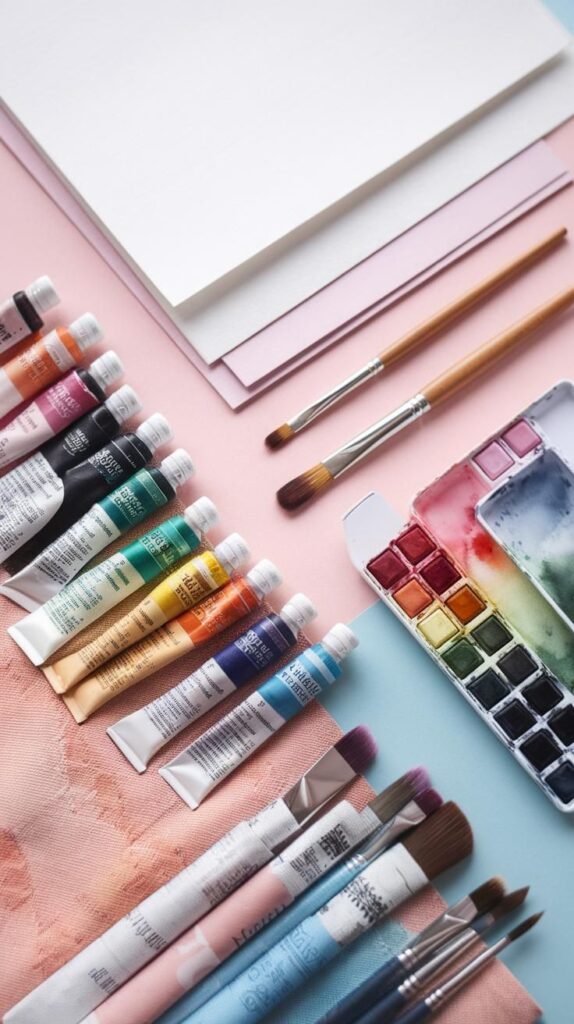
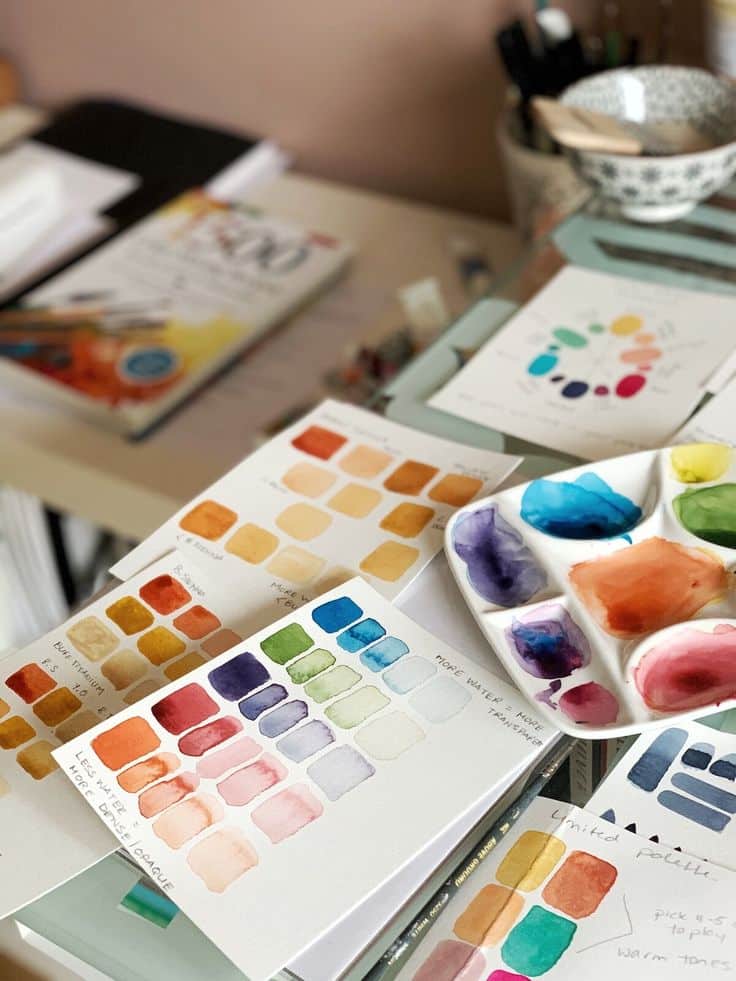
Before we dive into the ideas, let’s quickly cover the essentials. You don’t need much, but a few key items will make your watercolor journey much more enjoyable.
Basic Supplies: Paper, Brushes, Paints
- Watercolor Paper: This is non-negotiable! Regular drawing paper will buckle and warp with water. Look for paper labeled “watercolor paper,” preferably 140 lb (300 gsm) or heavier, which can handle washes without excessive warping. Cold press paper has a textured surface, while hot press is smooth.
- Brushes: Start with a few good quality synthetic brushes. A round brush (size 6 or 8) is excellent for lines and details, a larger round or flat brush (size 12 or 16) for washes, and perhaps a smaller detail brush.
- Paints: Pan sets are ideal for beginners – they’re less messy and great for travel. Tube paints offer more vibrant pigment concentration but can be a bit more challenging to manage initially. Opt for a basic set with primary colors, a green, a brown, and black/grey.
- Palette: A ceramic plate, a plastic palette, or even a simple piece of plastic will do.
- Water Containers: Two jars are ideal – one for rinsing dirty brushes, one for clean water to mix with paint.
- Paper Towels or Sponge: Essential for blotting brushes, lifting color, and correcting mistakes.
Embracing Imperfection
Watercolor has a mind of its own, and that’s part of its charm! Water flows, colors bleed, and unexpected interactions occur. Instead of fighting it, learn to embrace these “happy accidents.” They often lead to unique textures and effects you couldn’t have planned. Think of each painting as an experiment and a learning opportunity, not a quest for absolute perfection. This mindset shift is crucial for enjoying the process.
Understanding Water-to-Paint Ratios
This is the core of watercolor. More water means lighter, more translucent washes. More paint (less water) means richer, more opaque colors. Experiment on a scrap piece of paper to see how different ratios affect the intensity and flow of your pigments. Mastering this control is fundamental to achieving desired effects and is one of the key elements explored in various watercolor techniques.
Beginner-Friendly Watercolor Drawing Ideas
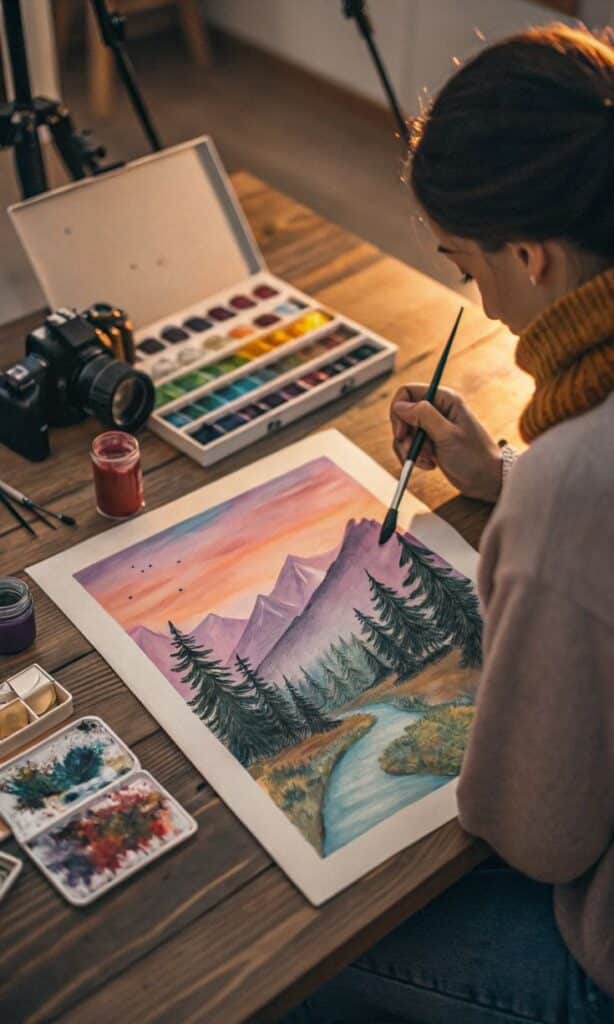
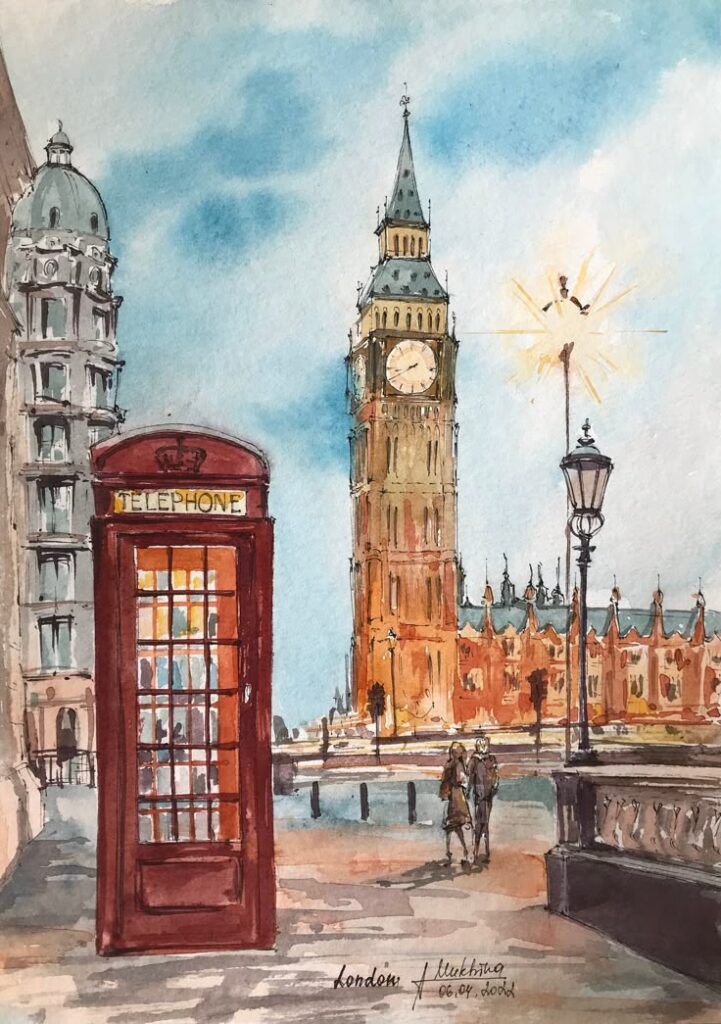
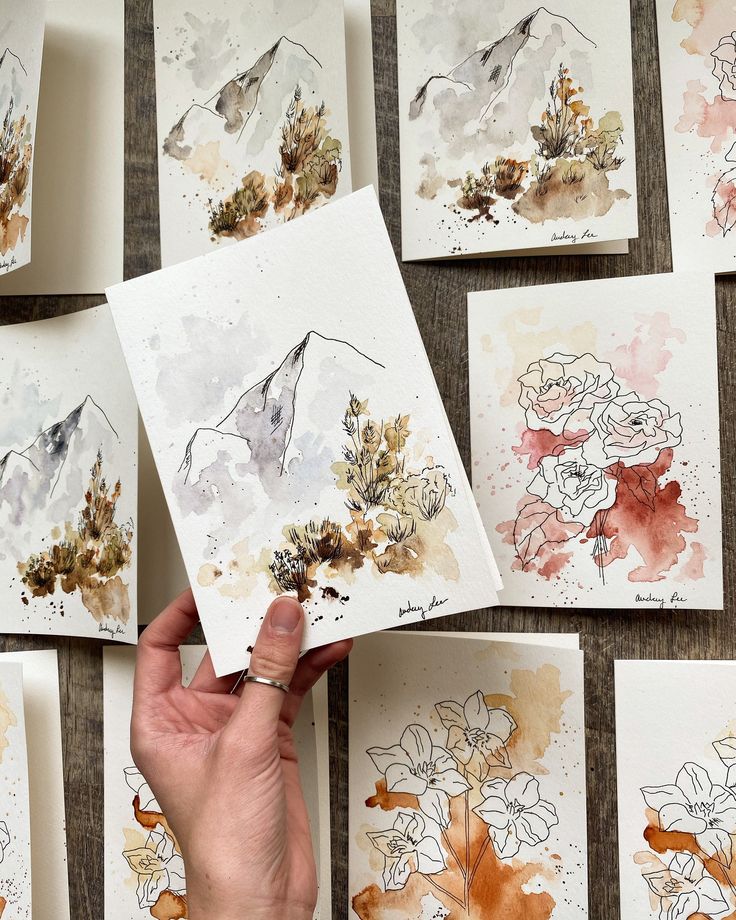
Ready to dive in? These ideas are perfect for getting comfortable with your tools and building foundational skills.
Simple Washes and Gradients
Start with the basics! Apply a single color wash across your paper, varying the amount of water to see how the tone changes. Then, try a gradient: start with a concentrated color at one end, gradually adding more water as you move across the paper to create a smooth fade. Practice horizontal and vertical gradients.
- Exercise: Paint a series of horizontal strips, each a different color, fading from dark to light. Or try painting the sky with a blue gradient fading to a pale yellow or peach horizon.
Abstract Blobs and Splatters
Let loose! Drip water onto your paper, then drop concentrated paint into the wet areas and watch the colors bloom and mix. Experiment with splattering paint from your brush for dynamic effects. This is a fantastic way to explore color mixing and the unpredictable nature of the medium without any pressure to create a recognizable object.
- Exercise: Create a page filled with overlapping, blooming colors. Once dry, you might even see interesting shapes emerge that you can highlight with a fine-liner pen.
Monochromatic Landscapes
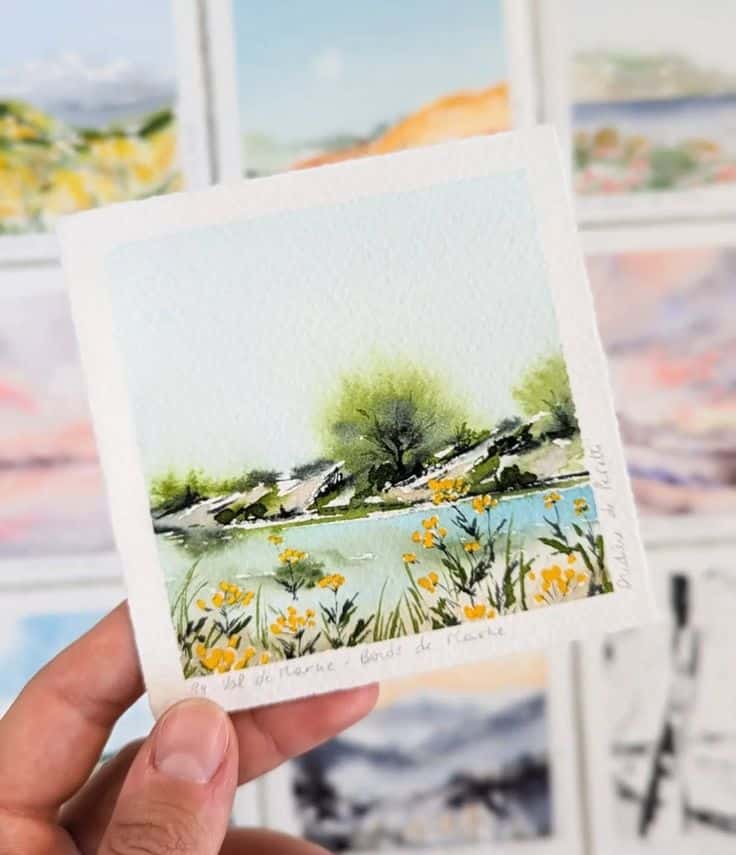
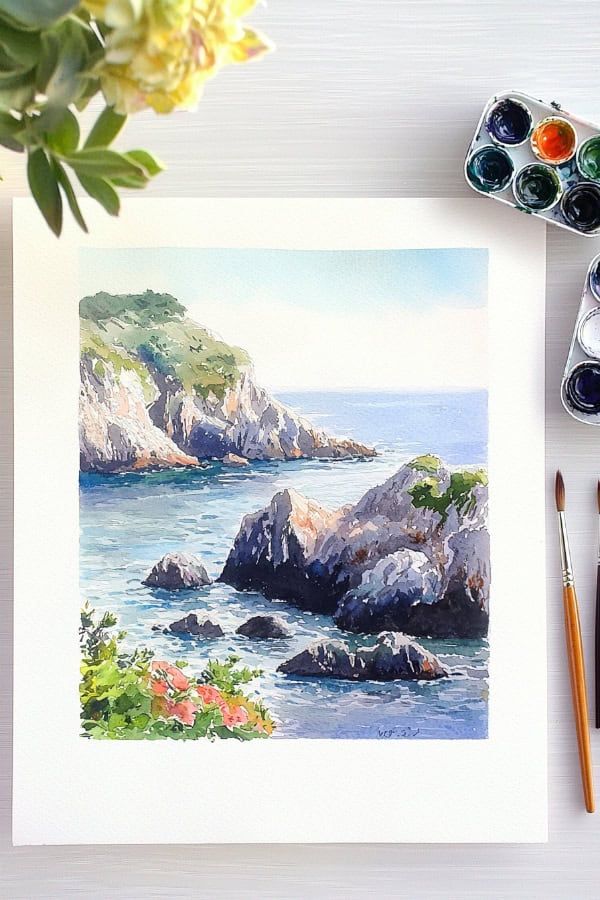
Limit your palette to just one color (e.g., Payne’s Gray, Indigo, or Sepia) and explore its full range of values. This is an excellent way to understand light and shadow without the complexity of color theory. Paint a simple landscape like a distant mountain range, a foggy forest, or a stormy sea, using only varying shades of your chosen pigment.
- Exercise: Depict a misty forest using only shades of green or blue. The lack of color forces focus on form and depth.
Botanical Silhouettes
Outline simple shapes like leaves, flowers, or even small branches. Fill the silhouettes with a single, even wash of color. For a twist, let two colors bleed into each other within the silhouette. This helps with brush control and understanding how paint fills a defined area.
- Exercise: Draw a few different leaf shapes. Paint them with different shades of green, allowing colors to softly blend at the edges if you apply them wet-on-wet.
Greeting Cards and Gift Tags
Small-scale projects are perfect for beginners. Create simple abstract designs, paint small floral motifs, or even hand-letter a word like “Hello” or “Thanks” and add a watercolor background. These quick projects build confidence and give you tangible, beautiful results to share. You might even find inspiration from simplifying forms, much like exploring one line drawing ideas can help distill subjects to their essence.
- Exercise: Take a small piece of watercolor paper, paint a vibrant splash of color, and then write a positive message over it once dry.
Intermediate Watercolor Drawing Ideas
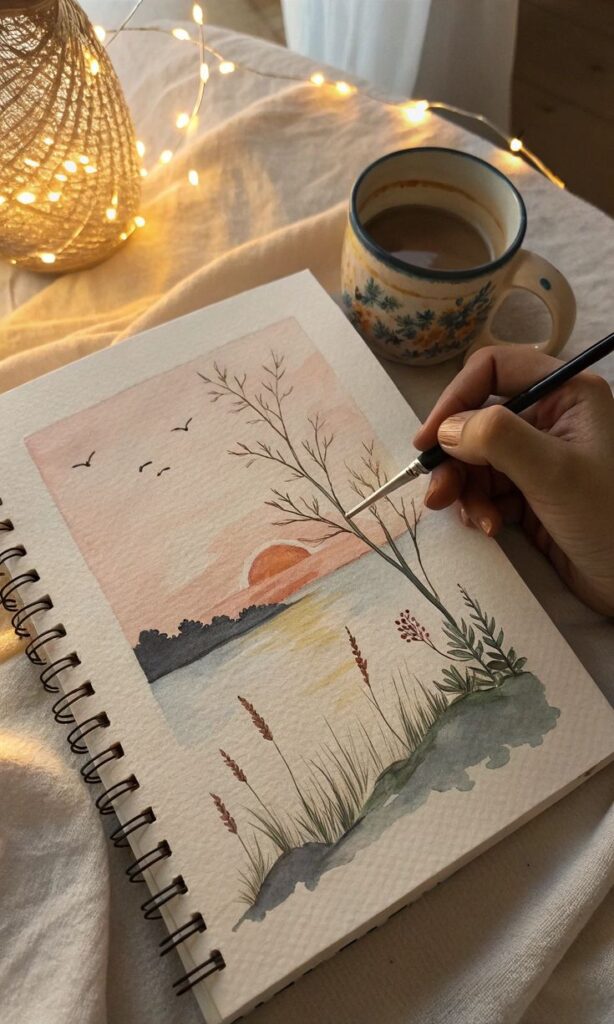
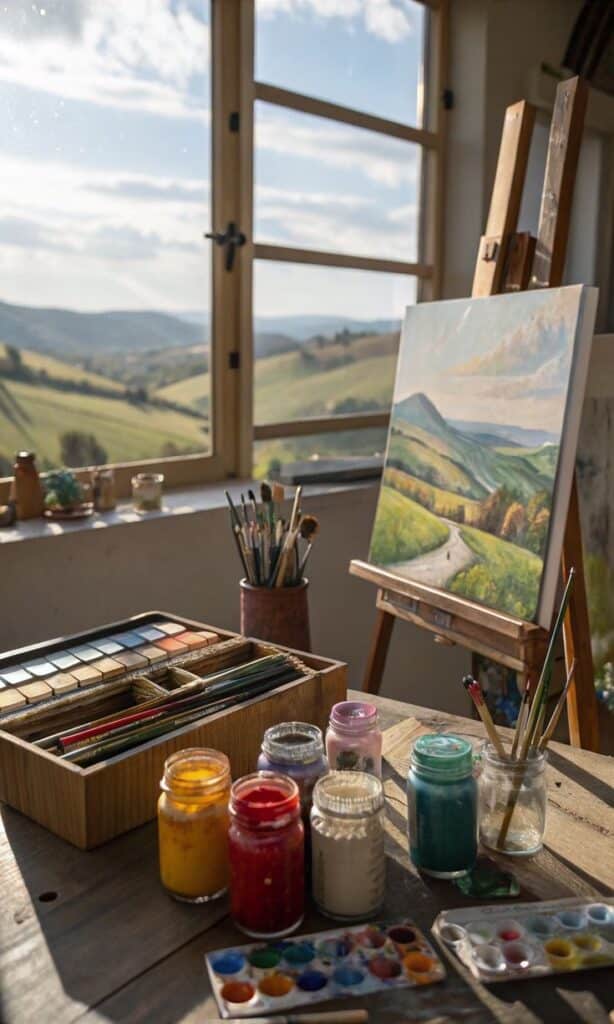
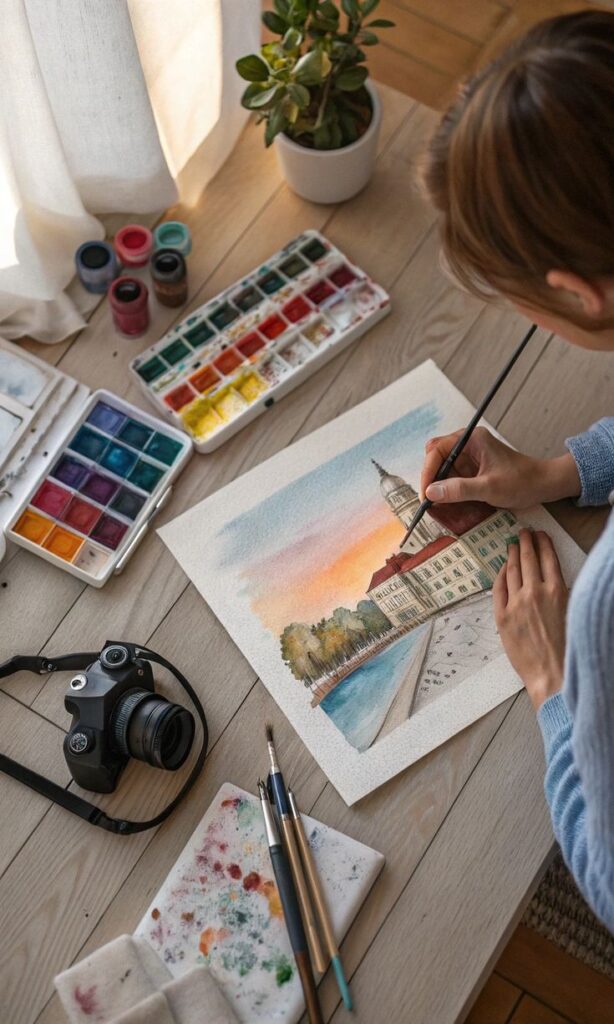
Once you’re comfortable with basic techniques, it’s time to add more complexity and detail to your work.
Still Life with Everyday Objects
Gather a few simple objects around your home – a piece of fruit, a coffee cup, a small plant, a book. Arrange them thoughtfully. Focus on capturing their basic shapes, the interplay of light and shadow, and the subtle variations in their colors. This is a fantastic way to practice observation and build confidence in rendering three-dimensional forms.
- Exercise: Paint a still life of a single piece of fruit, like an apple or an orange. Concentrate on the gradual color changes and the highlights reflecting off its skin.
Vibrant Floral Compositions
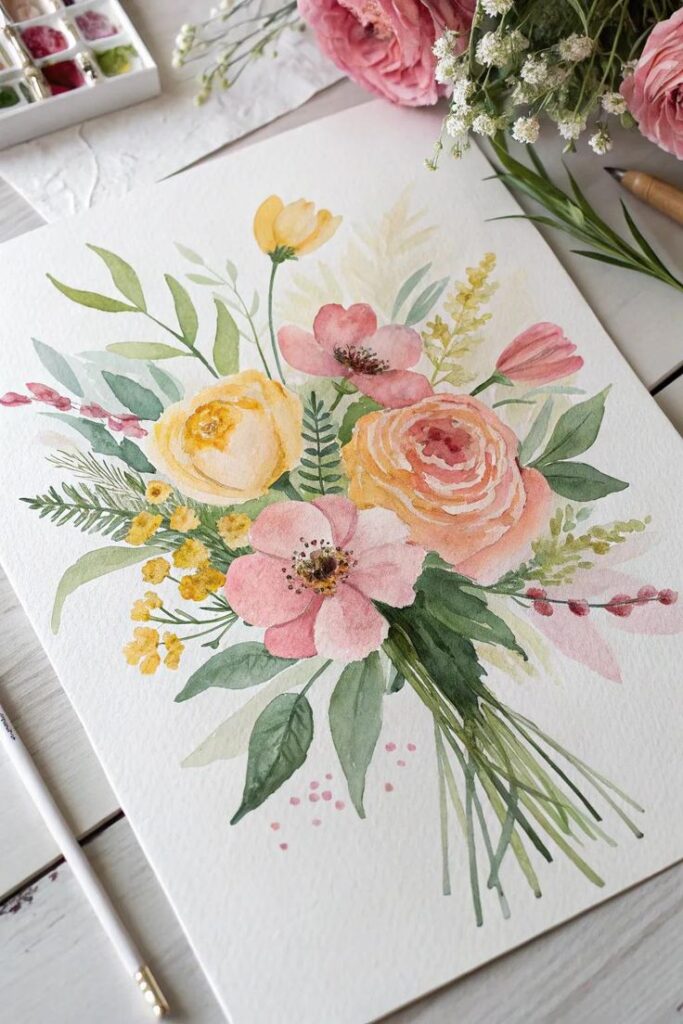
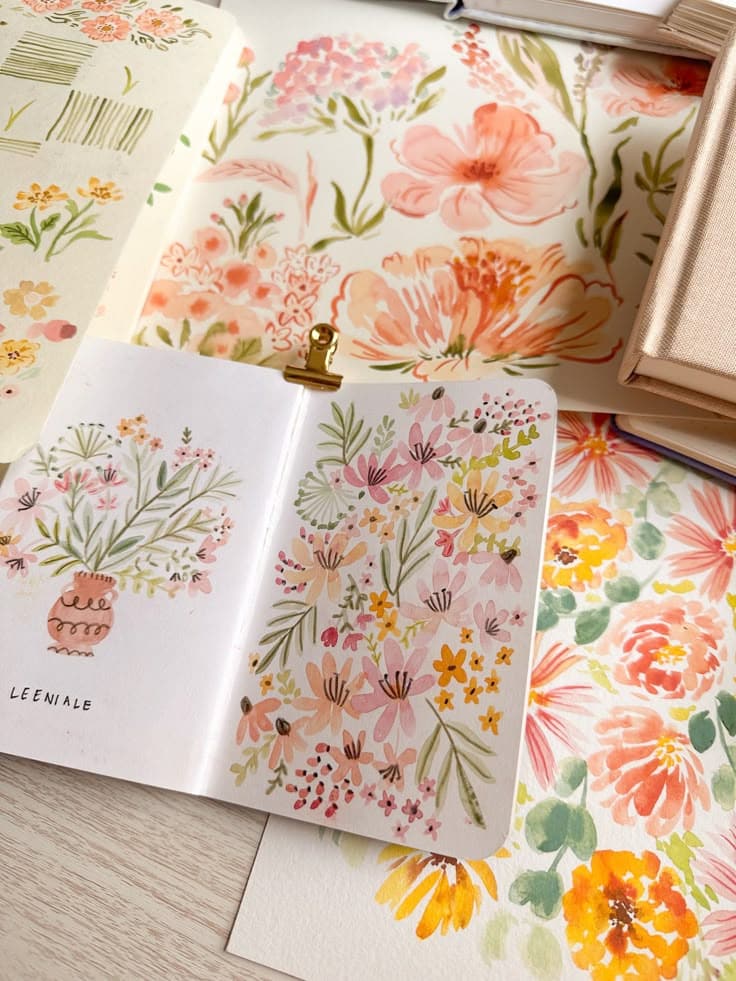
Flowers are a classic watercolor subject for good reason! Their organic forms and endless color variations lend themselves beautifully to the medium. Start with individual blooms, focusing on petals and leaves, then move to small bouquets. Experiment with different levels of detail, from loose and expressive to more botanical illustrations.
- Exercise: Choose a favorite flower – a rose, a sunflower, a poppy. Paint it, focusing on the way the petals overlap and how light plays on their surfaces.
Capturing Pet Portraits
Painting beloved pets can be incredibly rewarding. Start with simple profiles or sleeping animals, where complex expressions aren’t necessary. Focus on capturing the texture of their fur using dry brush techniques or layering washes for depth. Pay attention to the eyes – they are key to bringing a portrait to life.
- Exercise: Paint a simplified portrait of your pet (or a friend’s!). Begin with broad washes for the main fur colors, then add layers for texture and detail.
Simple Urban Landscapes
Explore the architectural beauty around you. Start with simple buildings, street corners, or skylines. Focus on capturing the overall mood and light rather than every minute detail. Use loose washes for skies and distant elements, and sharper lines for closer structures. If you’re looking for guidance on sketching techniques that translate well to watercolor, exploring urban landscape sketching techniques can provide valuable insights.
- Exercise: Find a photo of a quaint street scene or a building with interesting architecture. Focus on capturing the major shapes and light patterns, keeping your brushstrokes fresh and spontaneous.
Food Illustrations
From a slice of cake to a plate of fresh vegetables, food illustrations are incredibly popular and enjoyable to paint. They offer a chance to explore vibrant colors, interesting textures, and tempting compositions. Focus on making the food look appealing and delicious!
- Exercise: Paint a delicious-looking cupcake or a stack of pancakes. Concentrate on texture, highlights (like frosting shine), and shadow.
Advanced Watercolor Drawing Ideas
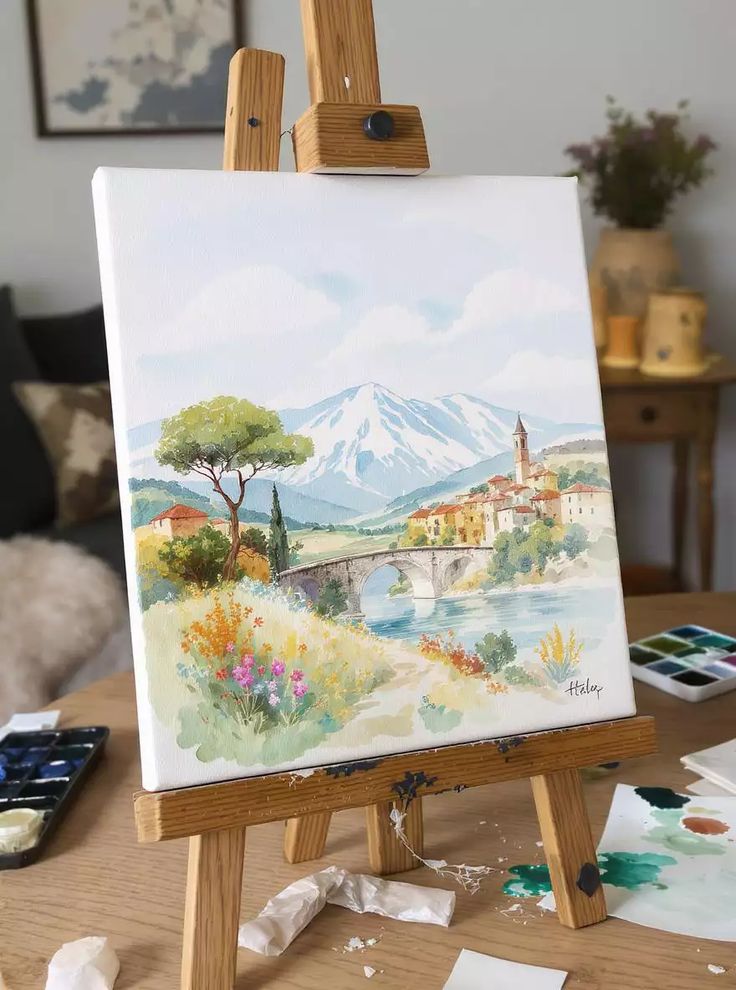
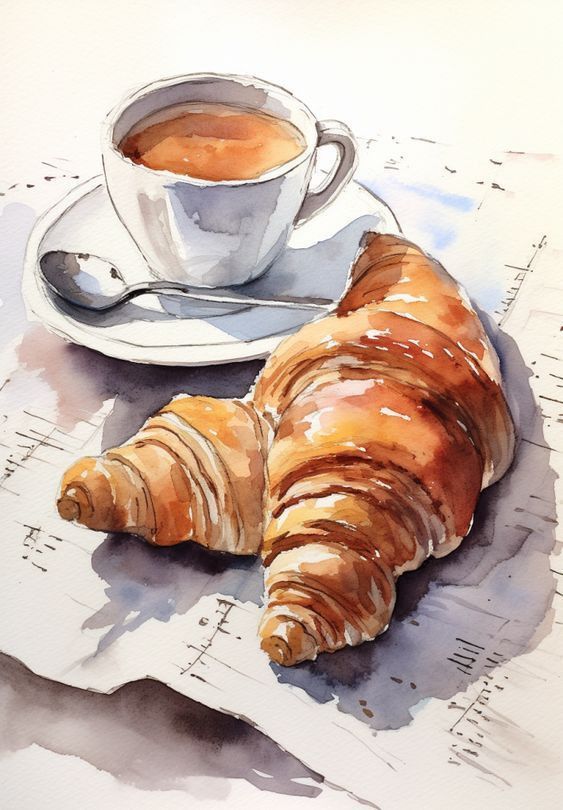
Ready to push your skills and explore the full potential of watercolor? These ideas demand more control, patience, and a deeper understanding of techniques.
Realistic Portraits and Figures
Capturing the subtleties of human expression and anatomy is one of the most challenging yet rewarding watercolor pursuits. This requires a strong understanding of facial features, skin tones (building layers with translucent washes), and light. Pay close attention to values and temperature shifts. For specific challenges like rendering different textures, learning how to draw realistic hair can be incredibly helpful for advanced portraiture.
- Exercise: Work from a reference photo of a person. Focus on building skin tones with multiple thin glazes, and carefully rendering the eyes, nose, and mouth.
Detailed Wildlife Scenes
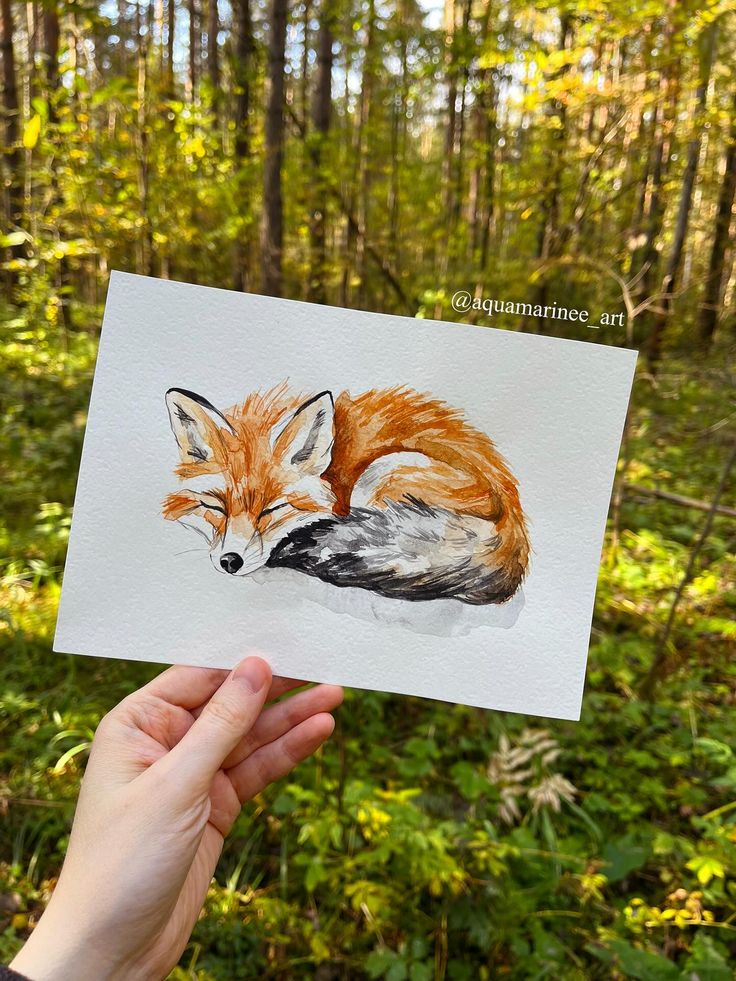
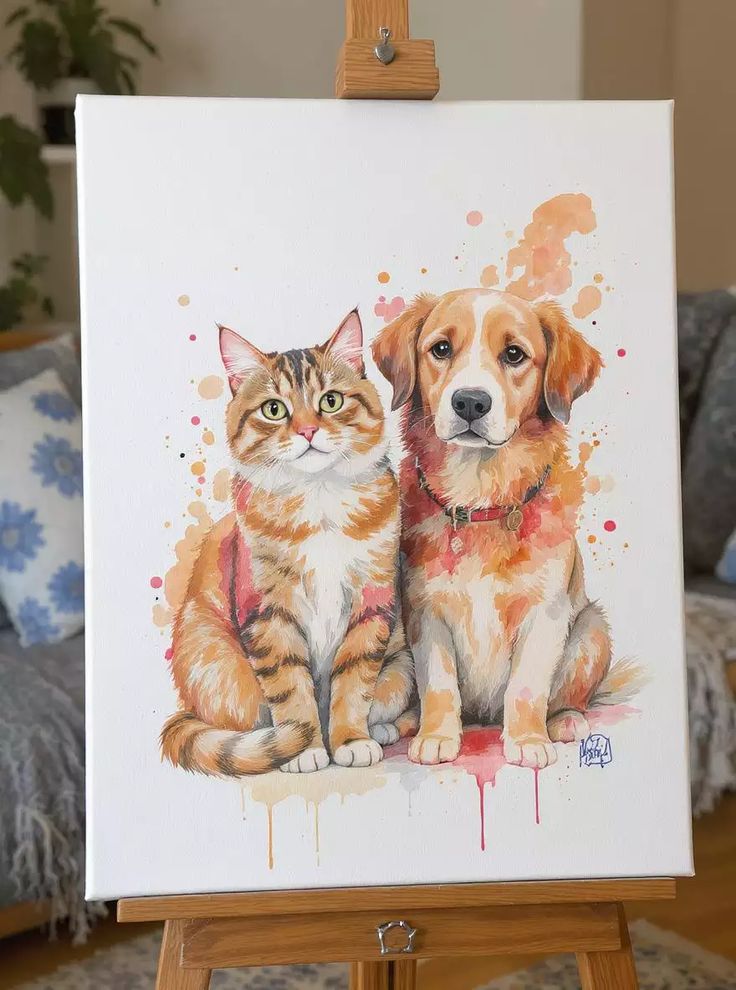
Whether it’s the intricate patterns on a bird’s feathers or the majestic stance of a deer, wildlife offers endless opportunities for detailed watercolor work. This often involves careful layering, precise brushwork for fur or feathers, and a keen eye for anatomical accuracy.
- Exercise: Choose a complex animal subject, like a tiger or an eagle. Spend time on the texture of fur/feathers and the luminosity of their eyes.
Complex Architectural Studies
Move beyond simple buildings to intricate architectural elements, historical structures, or detailed cityscapes. This requires precision in drawing, accurate perspective, and the ability to render complex textures like stone, brick, and glass. Mastering aerial perspective with subtle color shifts is key to conveying depth.
- Exercise: Paint a detailed historical building, focusing on its unique architectural features and the play of light and shadow across its surfaces.
Expressive Abstract Art
While it sounds simple, truly expressive abstract watercolor requires a deep understanding of color theory, composition, and flow. It’s about conveying emotion, movement, or an idea through non-representational forms, using techniques like wet-on-wet, lifting, and masking fluid to create dynamic effects. Developing a distinct drawing aesthetic can significantly inform your abstract work, helping you create pieces that are uniquely yours.
- Exercise: Experiment with pouring paint, tilting your paper, and introducing other elements like salt or alcohol to create a dynamic, emotion-driven abstract piece.
Storytelling Through Sequential Art
Combine your watercolor skills with narrative. Create a series of small panels or a single multi-panel piece that tells a short story or depicts a sequence of events. This could be a dream sequence, a simple everyday narrative, or even a mini-comic. This challenges you to think about composition across multiple frames and how color can convey mood.
- Exercise: Create a three-panel series depicting the transformation of a caterpillar into a butterfly, using watercolors to illustrate each stage.
Finding Inspiration Everywhere
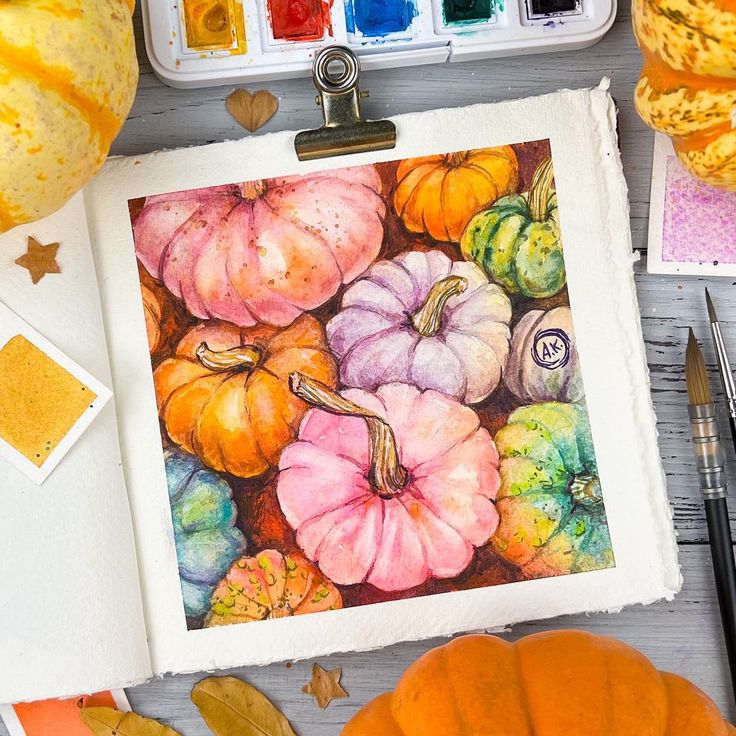
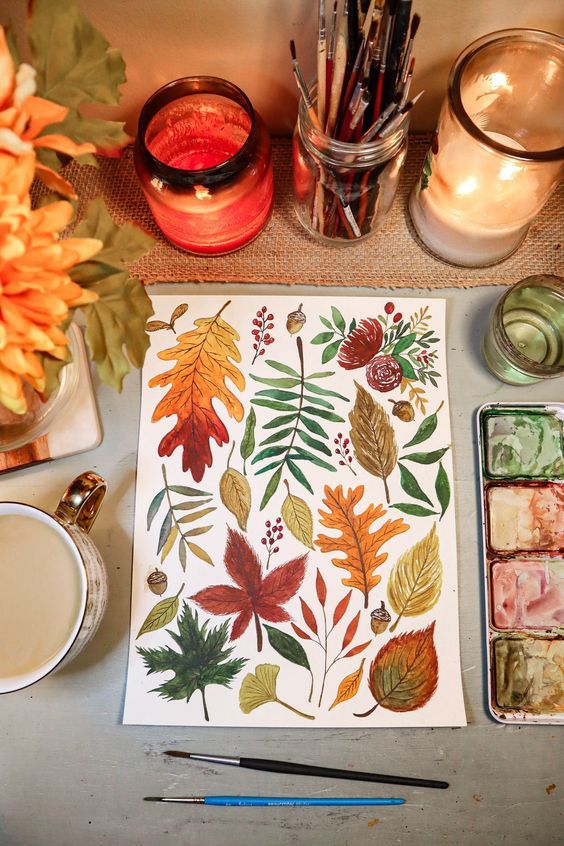
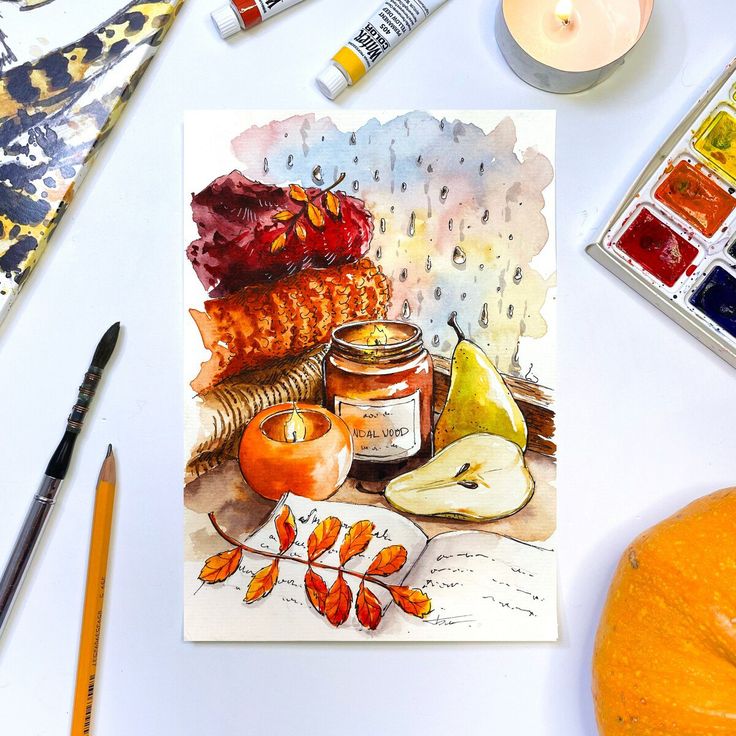
The world is your studio! Inspiration for watercolor drawing ideas is truly all around you.
Nature’s Palette
From the vibrant hues of a sunset to the subtle greens of a forest, nature offers an endless supply of subjects and color schemes. Take a walk, observe the changing seasons, and pay attention to how light interacts with natural forms. Flowers, leaves, landscapes, birds, and even tiny insects can spark countless ideas.
Everyday Objects
Look around your home. A favorite mug, a stack of books, a bowl of fruit, your spectacles – mundane objects can become fascinating subjects when viewed through an artistic lens. Focus on their shapes, textures, and the way light defines them.
Online Communities and Galleries
Explore platforms like Pinterest, Instagram, DeviantArt, or dedicated watercolor forums. Seeing what other artists are creating can be a powerful source of inspiration and motivation. Just remember to use these as starting points, not direct copies, to develop your unique style.
Travel and Photography
Your travel photos are a fantastic resource. They capture specific moments, light conditions, and unique places that can be translated into stunning watercolor pieces. Don’t feel pressured to reproduce them exactly; use them as a springboard for your artistic interpretation. You might even find that simple architectural photographs inspire unique compositions for your next painting. When thinking about how these pieces might fit into a broader creative vision, considering elements of contemporary interior design can help you visualize how your art enhances a space, perhaps even becoming a focal point.
Conclusion: Embrace the Flow, Create Your Magic
Watercolor painting is a beautiful, expressive, and deeply rewarding journey. It’s a medium that teaches patience, encourages experimentation, and celebrates the unique beauty of its fluid nature. Whether you’re just starting with simple washes or challenging yourself with complex portraits, remember that every brushstroke is a step in your artistic development. Don’t be afraid to experiment, make “mistakes,” and most importantly, have fun!
So grab your brushes, choose an idea that excites you, and let the water and pigment dance. The magic of watercolor awaits. What will you create today? Share your watery wonders with the world and inspire others on their artistic path!
- 799shares
- Facebook0
- Pinterest798
- Twitter1
